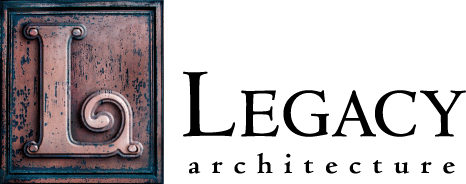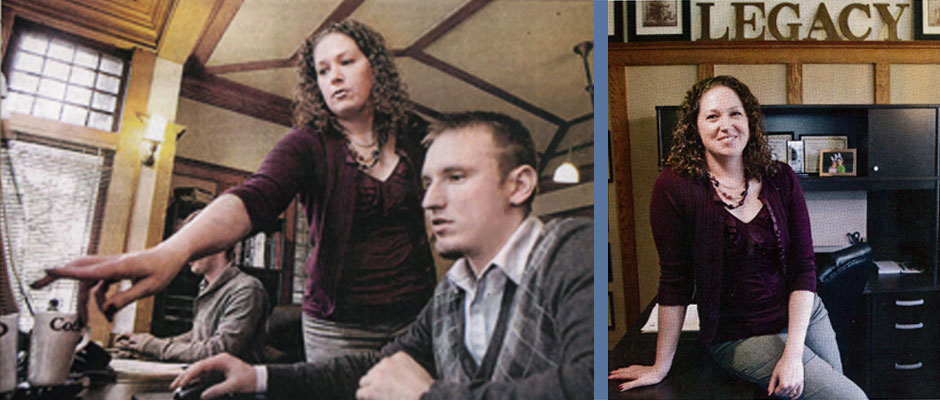Lehrke relishes role as historic preservation consultant
Schultz, Deanne. Lakeshore Living. January-February 2013.
As the owner of Legacy Architecture, Jennifer Lehrke said her years of remodeling experience provided the nuts and bolts essential to her current success.
“From an early age, I had a fascination with old buildings,” she said.
That fascination continues today, as Lehrke delves into architecture in a way that most others don’t – she’s a historic preservation consultant, one of just a handful in Wisconsin who specialize in preserving and restoring early buildings.
It’s work that takes the Sheboygan-based architect all along Wisconsin’s eastern lakeshore, from communities like Burlington and Watertown in the south to Allouez and Kaukauna farther north.
And it often involves buildings and homes destined for the prestigious National Register of Historic Places, “the official list of the nation’s historic places worthy of preservation,” according to the National Park Service’s website.
Lehrke said buildings are eligible for the National Register based on placement in one or more of four categories: architecture, history, event, or archaeology.
“The majority of the buildings listed on the National Register are there because of their architecture,” Lehrke said.
A perfect example of this locally is Charlie Ratigan and Jennifer Hogan’s 162-year-old cream city brick home in Manitowoc. After a 13-year meticulous renovation, the couple was ready to add their home to the Wisconsin State Register of Historic Places, and then the National Register of Historic Places (for which final approval is expected in early spring), so they called Lehrke to prepare the nomination papers.
The Italianate-style home was built in 1850 for Charles and Herriette Klingholz, and Lehrke said it meets the National Register’s requirement in two categories – architecture and history.
The documentation necessary for adding a home or building to the National Register is very involved and Lehrke said the state recommends that individuals not tackle this alone.
“It has to be researched thoroughly,” she said. “It really is an academic document, footnoted with a full bibliography. There are specifications on how it’s written, how the photography is done.”
She hauled a thick, comb-bound book off the shelf, the kind that looks like it would land with a thud on the floor, displacing swirls of dust. It’s an example of an earlier project that resulted in the building’s placement on the National Register, with Lehrke noting that the document itself ends up in Washington, D.C. at the National Park Service.
Homes or buildings listed on the National Register are also eligible for tax credits, and owners need to be aware of standards before proceeding.
She also said that several misconceptions linger about additional “responsibilities” once a home or building is listed on the National Register, saying, “People think they can’t do anything to the building once its listed, or they think they have to open it up for public tours,” both of which are false.
According to the Wisconsin Historical Society’s website, there are no restrictions on private property once listed on the State Register and the National Register. Owners are “encouraged to preserve” these properties, but there are no requirements in place to enforce this.
For Lehrke, the intrigue of being a history detective is what feeds her, as she said, “knowing there’s another historical building that will be preserved for future generations.”
She estimates that one-third of her business is historic preservation, with the balance being architecture-driven, but even that amount often revolves around historic or existing buildings.

